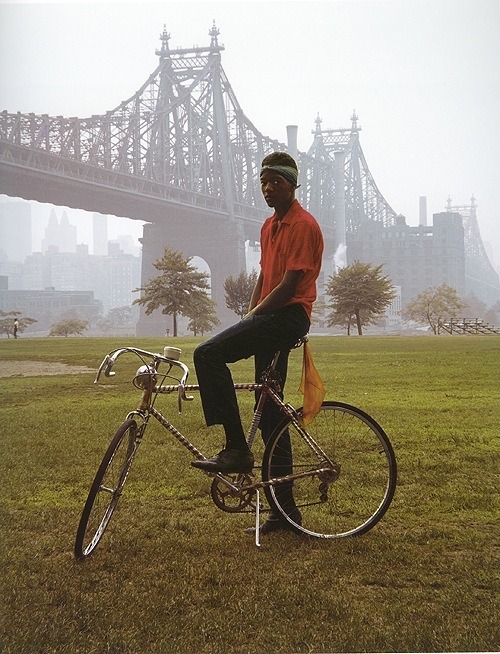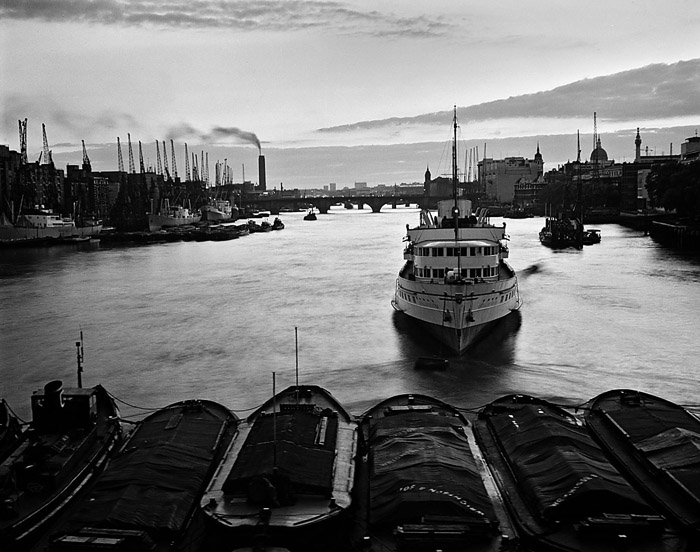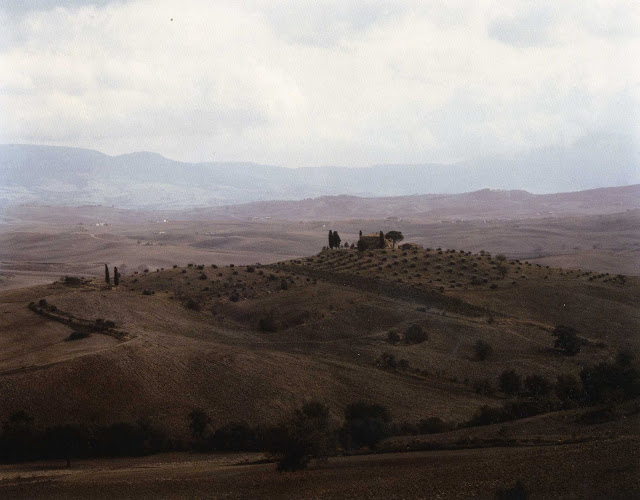Evelyn Hofer has been called “the most famous unknown photographer in America.”
Evelyn Hofer (1922-2009) was a German-American portrait and documentary photographer.
She moved to Mexico with her family in 1942, then to New York in 1946. She had apprenticed with two photographers in Zurich before attempting a professional career as a fashion photographer.
Hofer used a 4x5 view camera to make orderly and well-constructed portraits and scenic photographs. Her style centered on straightforward compositions that were clear, but not simple.
Evelyn Hofer (1922-2009) was a German-American portrait and documentary photographer.
She moved to Mexico with her family in 1942, then to New York in 1946. She had apprenticed with two photographers in Zurich before attempting a professional career as a fashion photographer.
Hofer used a 4x5 view camera to make orderly and well-constructed portraits and scenic photographs. Her style centered on straightforward compositions that were clear, but not simple.
Evelyn Hofer was a passionate portrait photographer. She has photographed famous contemporaries and ordinary people in the Basque region, recently married couples and people on the street. But she can also wait patiently for hours until her frame contains no people at all. Then she adds the pure beauty of the countryside or a venerable old building to a stark and timeless composition. Throughout her long photographic career, Hofer has sought out both motion and stillness and has revealed each in the most diverse moments.Her portraits tended to show subjects looking lost, sad, or at least ambiguous. [via Wiki and steidlville.com]



 Jackson Pollock's Studio, Long Island
Jackson Pollock's Studio, Long Island

 Times Square
Times Square




Maison Solvay, Door, Brussels, 1985



Saul Steinberg, with himself as a Little Boy. Long Island, NY, 1978
Dublin Sky, 1966


"Little Italy", Mulberry Street, New York, 1965
Pewter Pitcher with Grapes (Still Life #7), 1997
Hommage a Zurbaran, 1997
Flowers Villa Medici, Rome, 1982
Artsist J. M. BASQUIAT, 1988
The storey behind the shot:
Evelyn was asked to photograph Jean-Michel Basquiat for Vogue. Basquiat was the darling of the art world, young, hip, and very successful, Evelyn the established photographer, in her late sixties then and very much a lady. She arrived at his downtown loft at the agreed hour and was told that Basquiat was busy. Her response was please tell Mr. Basquiat that Miss Hofer will wait for him. She waited for hours—much longer then she thought tolerable. Eventually she heard rumblings upstairs. Basquiat descended the staircase. She looked at him, he looked at her, and then she simply stared him down. For the rest of the shoot he treated her with great respect. Evelyn had risen to his challenge and had won the battle. The portrait was excellent.[via the New Yorker]

“I have never seen a volume of London photographs that evoked the complexities of the city with such subtle discrimination,” Philip Toynbee wrote in The New York Times Book Review. “The headwaiter stands, with a certain pensive arrogance, behind a laid table in the Garrick Club; a milkman calls on an old lady who is just managing to keep up appearances in the near-squalor of her Battersea rooms; in the Red Lion public house, Duke of York Street, a bowler-hatted businessman eyes his tankard of bitter with the affection of a very, very long acquaintance.”


Harlem Church, New York, 1964

Four Young Men, Washington, 1975
Hofer's Black & white Work:

Gravediggers, Dublin, 1966


Anna and Emma, Dublin, 1966 [lighten up Anna!]
Flower Show, London, 1962

Lock's St. James Street, London, 1962
The Bowery, 1963
Two Chairs, London, 1975
Andy Warhol
The portrait of the Shepherd was taken in Spain in 1962. I saw him there amid his sheep. I got out of the car and asked if he would mind if I took his picture. He said no; he was very pleased. But by the time I got my tripod set up and was ready, the sheep had run away. Then something very sad happened. I wanted to pay him. He said he would be very happy to accept a pesata or two, but “You’ll have to put it in my pocket,” he said. “I don’t have hands and I’m also blind.” Then he told me a story. “During the Civil War,” he said, I was right at this meadow and there”—he made a gesture with his head—”where the curve of the road goes, a bomb fell. It cut off my hands. Now I see very little.” –Evelyn Hofer in Portrait: Theory

Girl with the bicycle, Dublin, 1966

Policeman, 59th St., New York, 1964

Queensboro Bridge, New York, 1964

” Springtime Washington “, 1965


Lee Krasner's Shoes,(Jackson Pollock's wife) Pollock Studio, Long Island, 1988
Ms. Hofer’s studied approach — the gravity and stasis of her portraits owed much to the German photographer August Sander — put her at odds with the candid, on-the-fly photography of contemporaries like Robert Frank. She remained unrecognized by most critics and curators, and never received a museum show in the United States. In 1994 the Musée de l’Elysée in Lausanne, Switzerland, presented a retrospective of her work, called “The Universal Eye.” ~[ via NY Times] Like many artist they are not understood interstood in their own time


Coney Island shooting gallery

“She has an extraordinary eye for subtle differences in the quality of light and in the details of texture and shape, whether her subject is the Duomo in Florence or two young waiters in a Dublin restaurant, and she has extraordinary patience, too, in capturing from every subject the exact image she intends to wrest from it,” Mr. Kramer wrote in 1977, reviewing an exhibition at the Witkin Gallery in Manhattan. “She is, in my opinion, one of the living masters of her medium.”


Maison Solvay, Door, Brussels, 1985



Saul Steinberg, with himself as a Little Boy. Long Island, NY, 1978
Dublin Sky, 1966


"Little Italy", Mulberry Street, New York, 1965
Pewter Pitcher with Grapes (Still Life #7), 1997
Hommage a Zurbaran, 1997
Oaxaca Jar with Cherries, (Still Life No. 4), New York, 1997
Artsist J. M. BASQUIAT, 1988
The storey behind the shot:
Evelyn was asked to photograph Jean-Michel Basquiat for Vogue. Basquiat was the darling of the art world, young, hip, and very successful, Evelyn the established photographer, in her late sixties then and very much a lady. She arrived at his downtown loft at the agreed hour and was told that Basquiat was busy. Her response was please tell Mr. Basquiat that Miss Hofer will wait for him. She waited for hours—much longer then she thought tolerable. Eventually she heard rumblings upstairs. Basquiat descended the staircase. She looked at him, he looked at her, and then she simply stared him down. For the rest of the shoot he treated her with great respect. Evelyn had risen to his challenge and had won the battle. The portrait was excellent.[via the New Yorker]

Luis Barragan, Mexico, 1983
Phoenix Park on a Sunday, Dublin, 1966
These, he wrote, were superior genre studies of Londoners “caught in their natural habitat.”
Jardin de Luxembourg, Couple, Paris, 1967


Harlem Church, New York, 1964

Four Young Men, Washington, 1975
Hofer's Black & white Work:

Gravediggers, Dublin, 1966


Flower Show, London, 1962

Balthus and Setsuko, Chateau-d'Oex, Switzerland, 1989
The Bowery, 1963
Two Chairs, London, 1975
Andy Warhol
The portrait of the Shepherd was taken in Spain in 1962. I saw him there amid his sheep. I got out of the car and asked if he would mind if I took his picture. He said no; he was very pleased. But by the time I got my tripod set up and was ready, the sheep had run away. Then something very sad happened. I wanted to pay him. He said he would be very happy to accept a pesata or two, but “You’ll have to put it in my pocket,” he said. “I don’t have hands and I’m also blind.” Then he told me a story. “During the Civil War,” he said, I was right at this meadow and there”—he made a gesture with his head—”where the curve of the road goes, a bomb fell. It cut off my hands. Now I see very little.” –Evelyn Hofer in Portrait: Theory

You have read this article black and white /
documentary photographer /
Evelyn Hofer
with the title Photographer Profile ~ Evelyn Hofer. You can bookmark this page URL http://nikiinwonderland.blogspot.com/2012/02/photographer-profile-evelyn-hofer.html. Thanks!



































